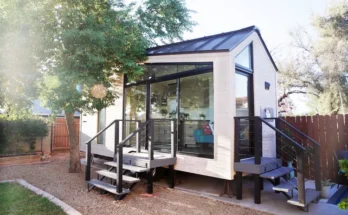In a bold move towards the future of sustainable aviation, United Airlines has announced a potential investment in JetZero, a startup company that’s developing a revolutionary new aircraft design. The deal, which could see United purchase up to 200 of JetZero’s Z4 blended wing body (BWB) planes, has raised eyebrows in the aviation industry. This innovative aircraft promises to deliver significant advancements in fuel efficiency and passenger experience, aligning with United’s long-term sustainability goals. However, the investment is conditional, with JetZero needing to meet several critical milestones before the deal can progress to firm orders.
A Conditional Deal with JetZero
The investment is a conditional agreement, meaning that United Airlines will only follow through on its purchase if JetZero meets several key conditions. Most notably, United has stipulated that the company must successfully fly a full-scale demonstrator aircraft by 2027. This is an ambitious goal, as it will demonstrate that JetZero’s Z4 blended wing body design can operate safely and effectively in real-world commercial environments. Until then, United has agreed to an initial path for firm orders of 100 Z4 aircraft, with an additional 100 options for future purchase.
United’s commitment to this groundbreaking project highlights the airline’s strategy of investing in future technologies that not only support sustainability but also enhance the passenger experience. Tom O’Leary, CEO and Co-Founder of JetZero, emphasized that the partnership signals a broader belief within the industry that new, innovative aircraft designs are essential for addressing future growth while reducing environmental impacts.
Why United Is Interested in JetZero’s Z4 Aircraft
The JetZero Z4, the next-generation airliner currently under development, promises to be a game-changer for the aviation industry. The aircraft’s blended wing body design—where the wings seamlessly integrate into the fuselage—offers several advantages over conventional tube-and-wing designs. These advantages include increased fuel efficiency and an enhanced passenger experience.
One of the standout features of the Z4 is its fuel efficiency. JetZero claims that the Z4 could deliver up to 50% savings in fuel consumption per passenger mile compared to current-generation aircraft. This is a major draw for United Airlines, which has been actively working towards reducing its carbon footprint and achieving sustainability targets. Moreover, the Z4 can operate on both conventional jet fuel and sustainable aviation fuel (SAF) blends, offering flexibility as the industry transitions to more sustainable fuel sources.
Beyond fuel savings, United sees the blended wing design as a way to enhance the overall passenger experience. While details are still forthcoming, the design promises a more spacious and comfortable cabin. With a capacity of 250 passengers, the Z4 is expected to offer a more spacious layout compared to current aircraft in its class, enhancing the in-flight experience for travelers.
Compatibility with Existing Infrastructure
A key concern with radically new aircraft designs is the potential need for new infrastructure—such as runways, taxiways, and jet bridges—to accommodate these planes. However, JetZero claims that its Z4 aircraft can use existing airport infrastructure without significant modifications.
The aircraft will feature conventional turbofan engines mounted on top of the fuselage instead of the wings, which is a major difference from the typical design of today’s jets. Despite this unconventional layout, the Z4 is designed to be compatible with existing jet bridges, runways, and taxiways. This makes the transition to a blended wing body aircraft far easier for airlines and airports, avoiding the need for costly and time-consuming infrastructure changes.
JetZero’s Z4 aircraft will also be able to operate efficiently with sustainable aviation fuel (SAF), a critical factor in the airline industry’s efforts to reduce its environmental impact. The ability to use SAF in the Z4 is a key feature that aligns with United’s long-term sustainability goals, making the aircraft an attractive option for the airline as it works to achieve net-zero emissions.
United’s Strategic Focus on Sustainability
United Airlines has made significant strides in recent years to improve its sustainability credentials. The airline has already set ambitious targets, including net-zero carbon emissions by 2050, and its investment in JetZero’s Z4 aircraft aligns with these goals. If the Z4 successfully meets its development milestones, it could play a major role in helping United reach its sustainability targets, while also providing the airline with a next-generation aircraft that is both more fuel-efficient and environmentally friendly.
In addition to fuel savings, the Z4’s ability to enhance passenger comfort fits into United’s broader strategy of upgrading its customer experience. United has invested heavily in improving in-flight amenities, technology, and overall service, and the Z4 could take this to the next level by offering a quieter, more comfortable ride on long-haul routes.
JetZero’s Progress and Industry Partnerships
JetZero has been making significant strides in developing the Z4 aircraft. The company started 2025 with a major announcement, revealing its progress toward producing a flying prototype. As part of its efforts, JetZero has also secured partnerships with the U.S. Air Force and Delta Airlines, signaling growing interest and confidence in the company’s technology. Delta has already committed to supporting JetZero in its efforts to get a full-scale demonstrator in the air by 2027. Delta’s expertise in commercial aviation, particularly with interior design and customer experience, is a valuable resource for JetZero as it moves forward with its aircraft development.
What’s Next for United and JetZero?
While the agreement between United and JetZero is still conditional, the deal represents an important step forward for both companies. If JetZero can meet the necessary milestones, United Airlines will be poised to add a fleet of up to 200 blended wing body aircraft to its operations, providing a significant boost to its sustainability efforts. These aircraft could revolutionize air travel by offering a greener, more efficient, and more comfortable flying experience for passengers.
The timeline is ambitious, with JetZero working towards a 2027 target for its full-scale demonstrator. However, if successful, the Z4 could become a major part of United Airlines’ fleet in the years to come, making the airline one of the first to introduce this innovative technology into commercial aviation.
In conclusion, United Airlines’ potential purchase of up to 200 JetZero Z4 aircraft could mark a transformational moment in the history of aviation. The blend of sustainability, innovation, and passenger comfort in the Z4 aircraft is something to watch closely as the aviation industry continues to evolve towards a more sustainable and efficient future. United’s conditional commitment reflects its forward-thinking approach, positioning the airline at the cutting edge of aviation technology.



